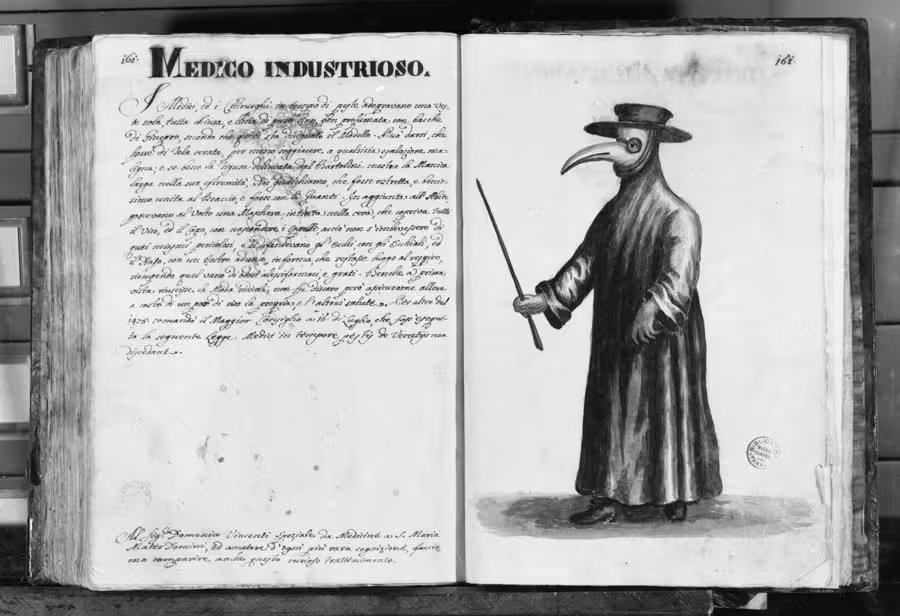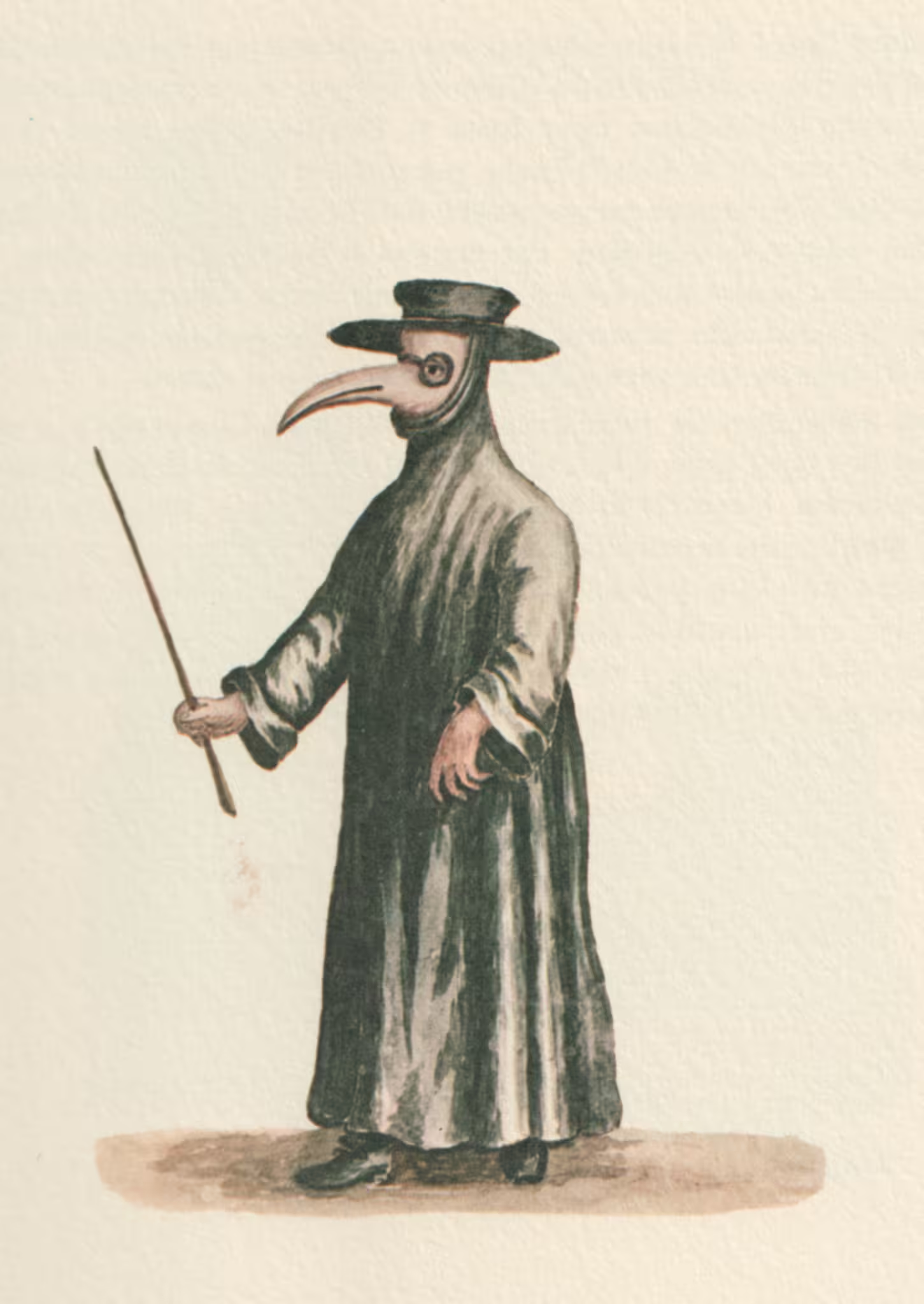This painting depicts the mythical plague doctor, which was already an established ‘truth’ in the mid-1700s.
Source: Gli abiti de veneziani di quasi ogni età con diligenza raccolti e dipinti nel secolo XVIII, by Giovanni Grevembroch (1731–1807), which in four volumes contains over six hundred watercolours of how Venetians dressed in the 1700s.

Industrious Doctor
Doctors and Surgeons in times of plague used a single robe, completely closed and smooth, made of pure linen, well perfumed with juniper berries, according to the model drawn here. It may have been made of oilcloth, to be less susceptible to any malignant fumes; and although the figure outlined by Bartolini shows the sleeve wide at its end, we judge that it was narrowed, and very well joined to the arm, and perhaps with gloves. In addition to the dress, they placed a mask on their face, dipped in wax, which covered the entire face and the head, hiding the hair so that they would not be soaked in those dangerous miasmas, and they protected their eyes, with Glasses, and the Nose, with a hooked Beak, it informs that there was still room for breathing, filling that space with alexipharmacons1 and pleasant smells.
Although at first sight the fashion seemed ridiculous, it was not un-dear, however, to ensure one’s own health and that of others at the cost of a few laughs. Furthermore, in 1478, the Maggior Consiglio ordered, on 16 July, to implement the following law. Medici in tempore pestis de Venetijs non discedant.2
We also show this curious entertainment to Mr. Domenico Vincenti, trader in medicinal herbs in S. Maria Mater Domini, and lover of all rare knowledge.
Translator’s notes

Original Italian text
Medico Industrioso
I Medici, ed i Chirurghi in tempo di peste adopravano una Veste sola, tutta chiusa, e liscia di puro lino, ben profumata con bacche di Ginepro, secondo che quivi sta disegnato il Modello. Può darsi, che fosse di Tela cerata, per meno soggiacere a qualsiasi esalazione maligna; e se bene la Figura delineata dal Bartolini mostra la Manica larga nella sua estremità, Noi giudichiamo, che fosse ristretta, e benissimo unita al Braccio, e forse con li Guanti. In aggiunta all’ Abito, ponevano al Volto una Maschera, intinta nella cera, che copriva tutto il Viso, ed il Capo, con nascondere i Capelli, acciò non s’imbevessero di quei miasmi peri- colosi, e si difendevano gl’Occhi, con gli Occhiali, ed il Naso, con un Rostro adunco informa, che restasse luogo al respiro, riempiendo quel vano di odori alessifarmaci, e grati.
Benché a prima vista riuscisse la Moda ridicola, non fu discaro però assicurarne allora a costo di un poco di riso la propria, e l’altrui salute. Per altro del 1478 comandò il Maggior Consiglio a 16 di Luglio, che foss’eseguita la seguente Legge. Medici in tempore pestis de Venetijs non discedant.
Al Sig.e Domenico Vincenti Speziale da Medicine a S. Maria Mater Domini, ed amatore d’ogni più rara cognizione, facciamo comparire anche questo curioso tratteniment
Grevembroch (1981), vol. 2, p. 161.
Related articles
Bibliography
- Grevembroch, Giovanni. Gli abiti de veneziani di quasi ogni eta con diligenza raccolti e dipinti nel secolo XVIII, orig. c. 1754. Venezia, Filippi Editore, 1981. [more]





Leave a Reply